Gilt trip: the Royal Oak gets a magical Florentine finish

It was a match made in Florence. When Audemars Piguet wanted to mark the 40th anniversary of the women’s Royal Oak, they turned to Italian jewellery designer – and dedicated Royal Oak wearer – Carolina Bucci.
Known for her everyday approach to fine jewellery and precious coloured stones, London-based Bucci is the fourth-generation of a traditional Florentine family jeweller. Her pieces are crafted at the family workshops in the Italian city. It's also where she developed her other key design signature, a gold technique known as the 'Florentine finish'.
Created using a diamond-tipped high-pressure drill, which blasts indentations into the metal, the gold takes on a shimmering quality that is akin to yet bereft of pavé diamonds. It was this that sparked the link with Le Brassus marque Audemars Piguet, who has a history of creative finishing in metals and who adapted the technique to create its new women’s watch – the Royal Oak Frosted Gold.
Applying the finish to the geometric lines of arguably the most hallowed watch design of modern times – Gérald Genta’s Royal Oak – was not without its problems. The design of the watch, with its instantly recognisable ‘bolted’ octagonal bezel is complex, as watch designer Jacqueline Dimier attests: 'The bracelet is made up of many elements and is a super complicated design,' she says.

Detail of the frosted gold Royal Oak’s octagonal bezel
One of few women watch designers of note, it was Dimier’s job to reinterpret Gérald Genta’s original 1972 design for women when she arrived at Audemars Piguet in 1976. The brand is also celebrating her achievements as a designer this year.
The finished design took two years to develop. Teams at Audemars Piguet’s specialist finish workshops in Geneva conducted an ongoing exchange with Bucci’s jewellers in Florence. Likewise, Bucci pored over Audemars Piguet’s archives in Le Brassus, and they all got busy on Facetime and Skype.
'After the first attempt the sparkle was beyond but the feel was so rough to the touch you couldn’t wear it,' recalls Francois-Henry Bennahmias, Audemars Piguet CEO. 'Then we decided to try a softer approach but the gold lost the shine and the sparkle. We had to go back seven times to work out the exact depth of impact on the gold.'
As Bucci says, it’s not the same when applying the technique to a watch as you would to a jewellery design. 'It’s very different, from the surface to the depth of metal – and our alloys are not the same. But also from a functional point of view, the constant moving parts of the watch bracelet meant they needed to work and not grind together, so the angles had to be adjusted. It was really a puzzle.' Audemars Piguet also had to develop the technique so that every hand-decorated edition of the watch design had a uniform finish.
'Really, we’re fusing two very opposite concepts,' Bucci offers: 'Precision and mechanics with a finish that is perfectly imperfect.'

The Royal Oak Frosted Gold is also created in white gold. Right, watch designer Jacqueline Dimier reinterpreted the original men’s Royal Oak for women in 1976

Applying the frosted gold technique to the uniquely constructed Royal Oak bracelet is a highly skilled task

The rose-gold version of the Royal Oak Frosted Gold
INFORMATION
For more information visit the Audemars Piguet website
Wallpaper* Newsletter
Receive our daily digest of inspiration, escapism and design stories from around the world direct to your inbox.
-
 Design makes a welcome return to the Dakar Biennale, sounding a clarion call to Africa’s new creative generation
Design makes a welcome return to the Dakar Biennale, sounding a clarion call to Africa’s new creative generationThe Dakar Biennale 2024 (7 November – 7 December) includes design for the first time in 20 years; here are four designers to look out for and what the event means to them
By Mazzi Odu Published
-
 Hot metal: why shiny tableware is a holy grail of hosting
Hot metal: why shiny tableware is a holy grail of hostingFrom a silvery modernist coffee pot to a perfectly poised stainless-steel candleholder, bring glimmer to dinner with shiny metal tableware
By Bridget Downing Published
-
 Denmark’s BIG has shaped itself the ultimate studio on the quayside in Copenhagen
Denmark’s BIG has shaped itself the ultimate studio on the quayside in CopenhagenBjarke Ingels’ studio BIG has practised what it preaches with a visually sophisticated, low-energy office with playful architectural touches
By Jonathan Bell Published
-
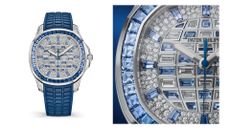 Jewelled watches: five iconic designs get a glittering makeover
Jewelled watches: five iconic designs get a glittering makeoverFrom the Rolex Daytona to the Patek Philippe Aquanaut, 2024 is a dazzling year for jewelled verions of watch design classics
By Caragh McKay Published
-
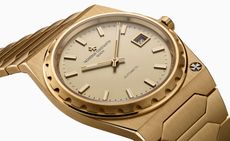 Vacheron Constantin unveils the Historiques 222 to mark 45 years since the model’s launch
Vacheron Constantin unveils the Historiques 222 to mark 45 years since the model’s launchVacheron Constantin restates its place in the pantheon of ‘sports chic’ watches
By Bill Prince Last updated
-
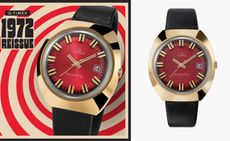 This Timex retro quartz watch is straight from the 1970s
This Timex retro quartz watch is straight from the 1970sThe Q Timex 1972 Reissue watch stays faithful to the design codes of the original
By Hannah Silver Last updated
-
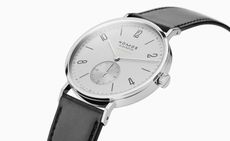 Classic meets cool in Nomos Glashütte’s platinum grey watch design
Classic meets cool in Nomos Glashütte’s platinum grey watch designTwo new Tangente Neomatik watches draw on Nomos Glashütte’s clean German design codes
By Hannah Silver Last updated
-
 Girard-Perregaux goes back to the future with rethought Casquette watch
Girard-Perregaux goes back to the future with rethought Casquette watchGirard-Perregaux pays tribute to its original 1970s watch with the new and updated Casquette 2.0
By Hannah Silver Last updated
-
 G-Shock marks 40 years of youth culture with limited-edition watch
G-Shock marks 40 years of youth culture with limited-edition watchG-Shock and the Museum of Youth Culture look to the archives for the new GW-M5610MOYC-1ER watch
By Hannah Silver Last updated
-
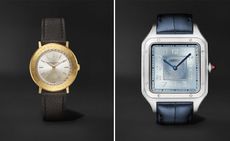 Ten watch brands mark Mr Porter’s anniversary with special editions
Ten watch brands mark Mr Porter’s anniversary with special editionsTen watch brands, including Cartier, Jaeger-LeCoultre, Vacheron Constantin and Bell & Ross, are celebrating Mr Porter’s tenth anniversary in style
By Hannah Silver Last updated
-
 Atelier Oï’s Louis Erard watch is inspired by a minimalist sundial
Atelier Oï’s Louis Erard watch is inspired by a minimalist sundialAtelier Oï has rethought the Louis Erard Le Régulateur watch with a minimalist dial, engraved as if with rays of light
By Hannah Silver Last updated